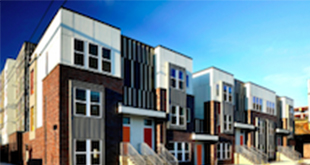
From How Housing Matters, a joint effort of the Urban Institute and the MacArthur Foundation, learn how the Paseo Verde mixed-use development supports childhood wellness.
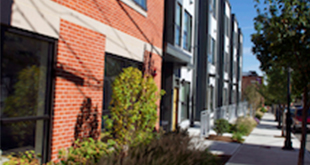
Based on sets of neighborhood and project screening criteria, the Chelsea Flats investment is scored on housing, jobs, walkability, and environmental quality.

Launched by LISC in 2007, the BSC strategy simultaneously addresses work, income, health care, housing, education and more in low income neighborhoods.
1
A Participatory Action Research Field Guide from the Healthy Neighborhoods Study, published by Conservation Law Foundation in partnership with the Healthy Neighborhoods Study research team, describes how residents, community partners, and researchers work together in 9 Eastern Massachusetts communities using Participatory Action Research to understand and solve problems most important for making change on the ground.
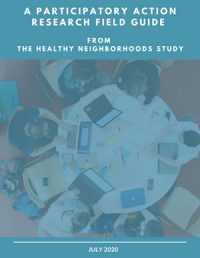
After years of research together, this guide was written for other communities interested in Participatory Action Research (PAR). This method of research is grounded in the idea that the people who are most impacted by a problem are in the best position to understand and solve that issue. This means that research on the health impacts of neighborhood change should be led by the people in the communities experiencing that change, focusing on residents’ lived experiences and expertise.
The Guide includes:
2
The Public Health Department of Seattle and King County was awarded $451,000 over 30 months to determine the impact of a publicly subsidized housing development on resident and community health and well-being.
The grant was awarded by Evidence for Action, a Robert Wood Johnson Foundation program housed in the center for Health and Community at the University of California, San Francisco.
Yesler Terrace, the housing development examined in the study, houses low-income, ethnically diverse residents and is owned and operated by Seattle Housing Authority. The results of this study provide guidance for community redevelopment while maintaining culture and community vibrancy.
More information on the project’s methodology and results can be found in this slide deck produced by Public Health Seattle and King County, Seattle Housing Authority and Neighborcare Health.
3
Taking a new approach to combat childhood obesity, architects redesigned a decades old school to encourage more physical activity and healthier eating for elementary students in rural Virginia.
This video talks with architects about how they transformed all the elements of a school building–from color palette to furniture to the cafeteria–to promote healthy behavior.
As one of the designers said, “a child is a kinetic, excited entity. So we designed choices to let the child move.”
4
A story of how renovations to a preschool in Oakland, California, not only made the space a better place for the children to play and the staff to work but also, unexpectedly, improved their health and helped stabilize the center’s finances.
With funding from the Low Income Investment Fund (LIIF),the Booth Memorial Child Development Center in Oakland, California replaced the dusty, dirty carpets, put in new child-sized sinks, and created more active play space.
As a result of less frequent asthma attacks, attendance went up among students resulting in higher net income for the Center, and staff disability claims dropped dramatically resulting in additional cost savings. The data now serve as evidence to support LIIF’s investments in healthy child care in other cities.
5
Launched by LISC in 2007, the Building Sustainable Communities (BSC) strategy simultaneously addressed work, income, health care, housing, education, safety, and nutritious food in low-income neighborhoods across the country.

With the BSC initiative, the Local Initiatives Support Corporation wanted to go beyond describing individual projects and programs and find out whether, taken together, its place-based investments actually help people lead better lives.
Read the full report or learn more about the results of LISC’s coordinated investments in housing, education, safety, employment, and health—all at once—in four struggling communities:
6
The Quality of Life plan for the Eastern North neighborhood in Philadelphia explains how community-based planning engages a wide range of local organizations and residents; comes to agreement about assets, deficits, and priorities; and identifies specific measurable goals to improve a neighborhood.
The Quality of Life Plans developed by the Local Initiative Support Corporation (LISC) bring a community together to map out its needs, potential solutions, and possible partners. The plan considers the whole community, including schools, parks, health care and child care, community safety, organizing, social services and opportunities for economic advancement.
The plan for the Eastern North neighborhood of Philadelphia was led by LISC Philadelphia, community partner Asociación Puertorriqueños en Marcha, and includes specific strategies, actions, partners, performance measures, and a timeline for each of seven neighborhood improvement factors.
A Report Card describes the neighborhood’s progress through 2013.
7
Read the story of how Mercy Housing and partners built the Mission Creek Senior Community for formerly homeless elders–and saved millions of dollars in health care costs through avoided hospitalizations and reduced skilled nursing care.
Mission Creek is a mixed-use housing development that combines onsite health services and supportive care designed specifically for the needs of homeless elders.
The project has saved $1.46 million in avoided hospitalizations across the 51 seniors in the community at the time of the evaluation. Independent housing also saved the state $9.2 million over seven years in Medicaid and Medicare by reducing skilled nursing care. The benefits of enabling people to lead better lives are incalculable.
Mission Creek was a collaboration between Mercy Housing and the San Francisco Redevelopment Agency, the San Francisco Department of Public Health, and the San Francisco Public Library.
8
The Healthy Neighborhoods Equity Fund assigns a HealthScore rating to all potential projects, based on sets of neighborhood and project screening criteria. In this example, the Chelsea Flats investment is scored on the likely effects on housing, jobs, walkability, and environmental quality.
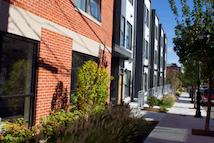
The Healthy Neighborhoods Equity Fund (HNEF) brings new forms of financing to community development. The projects in the Fund are near transit, have good density, and are built in ways that promote health, from parks and green space to access to fresh and healthy food.
To be part of the Healthy Neighborhoods Equity Fund, projects must meet certain criteria, one of which is to score above 50 on the “healthscore rating system.” The system determines how much impact the project will have on people’s lives, particularly their health.
Chelsea Flats in Boston was one project recently funded through HNEF. Project leaders used a health impact assessment and the healthscore rating system to gauge both the community’s needs and to help determine the features of the development. Among a range of healthy living indicators, access to fresh food, indoor air quality, and the need for economic opportunities stood out.
9
The Denver Housing Authority, in partnership with Mile High Connects and others, began the process of redeveloping the downtown core neighborhood of Mariposa. They used a newly designed toolkit, report card, and carefully selected indicators to guide this process.
Specifically for this project, the Denver Housing Authority also partnered with architectural firm Mithun, Inc., to develop the Mariposa Healthy Living Tool to guide the holistic, sustainable, and healthy redevelopment of the neighborhood.
An extensive sample Report Card included in the toolkit uses the Mariposa Community as the focus. It breaks down the components of that work into the six broad determinants and provides the specific indicators for Mariposa and the rationale for each. And for project planning, the Report Card also includes the data sources used for each indicator, the geographic scope of the data, the frequency of monitoring, and notes on associated caveats and limitations.
10
From How Housing Matters, a joint effort of the Urban Institute and MacArthur Foundation, learn how the Paseo Verde mixed-use development supports child wellness through improved air quality and design that promotes biking, walking, and climbing stairs. Onsite services for families in poverty include a health clinic, pharmacy, and social services.
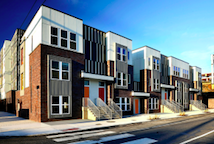
The Eastern North neighborhood of Philadelphia, where Paseo Verde is located has high rates of asthma, diabetes, and hypertension, and half of the areas housing stock is over 60 years old.
The Paseo Verde development supports children’s health through its environmentally sustainable LEED certified design, onsite health center and pharmacy, resident services, and social service programs. This three page report outlines the history of the project, its hurdles and successes.
11
Fifteen miles from downtown Atlanta, East Lake Meadows was a public housing site riddled with violence and lost opportunity in the 1980s and 1990s. Fearing another generation’s opportunities lost to poverty, its residents, the Atlanta Housing Authority, and Tom Cousins, a wealthy real estate developer, came together in the mid-1990s to try something new. The rest is history.
Recognized by the Urban Land Institute as a national model for community redevelopment, East Lake today is a vibrant community of mixed income housing, award-winning schools, a YMCA, swimming pools, and golf courses. The development puts health and well-being at its center. “We started with housing,” said Carol Naughton, president of Purpose Built Communities, the “community quarterback” seeing the project through. “But within a month or two, we recognized that housing alone was a necessary but insufficient condition to break the cycle of poverty. We wanted to create a great neighborhood where everyone could reach their full potential.” And they are, as these changes reveal.
12
This short video of an HIA conducted in Curry County, Oregon shows how it helped to promote healthier housing and alleviate the respiratory illnesses, injuries, and other health problems associated with living in poor quality housing.
In Curry County, Oregon, one in three families lives in manufactured homes. But many of those homes were built in the 1970s and are becoming dilapidated and dangerous to health. And many of the families lack the resources to rehab or repair their homes.
A public health and community development project used a health impact assessment (HIA) to raise awareness of the health-housing connection and to spark change. The results led to a new lending program for homeowners and to design changes in the homes.
For the Manufactured Housing Association of Oregon, said Annette Klinefleter, the project’s HIA author, “the HIA was an extraordinarily powerful tool because it truly influenced their design standards.” They hadn’t thought about design through the lens of health before.
“When a project has a clear base in public health evidence,” said Andrea Hamberg of the Oregon Health Authority, “it changes how people think about the work they do, it changes what is possible in terms of fundraising, and it changes how policymakers make decisions.”